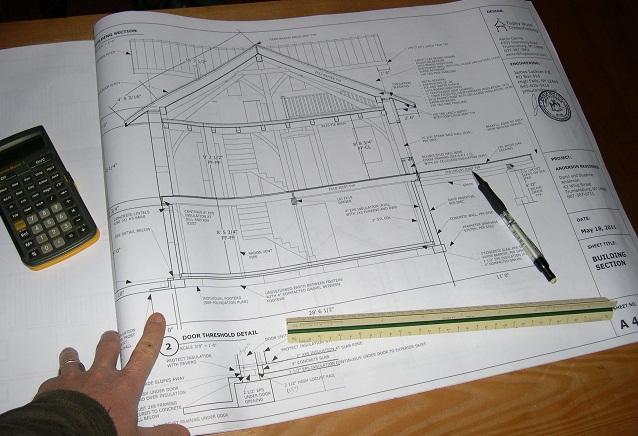DESIGN

PRINCIPLES AND STANDARDS
- We design with and are informed by the natural environment and not in isolation with it.
- We favor natural materials and low-toxicity materials not only for the health of the occupants, but also for everyone that is affected along the entire chain of exposure - from extraction to disposal of a material.
- We design conservatively with time honored durable traditional methods mixed with the best that modern building science has to offer.
- We design small, with thoughtful use of space.
- We design with affordability in mind without neglecting beauty.
- We are informed by the most comprehensive and progressive building standard that we know of, the Living Building Challenge, https://ilbi.org/lbc/standard.
PROCESS
The design process we use can be broken down into three phases:
- Design Programming:
- In this phase we will outline the design and build process. We will discuss your projects parameters approximate size, rooms, etc. and review any sketches, photos, or other information that you can bring to communicate what you need and desire in a structure. We will do a lot of listening. There will be a site visit, a discussion about rough project costs and many questions will be answered.
- Schematics / Design Development:
- In this phase we will begin turning all the information we've gathered into drawings. We use 3-D computer modeling to communicate our designs, which will be the basis for developing construction drawings. Floor plans, material specifications, preliminary engineering, code review and refinement of project costs are developed at this stage.
- Construction Documentation and Planning:
- In this phase complete construction documents and the energy code compliance certificate are finalized. Plans are stamped after final engineering review, final estimates and a contract are proposed and a construction schedule is developed.



This is a conventional format for architectural design. What is unconventional, and a substantial advantage in our process, is that Aaron was a general contractor before he became a designer and understands what builders need to build efficiently and cost effectively. We build the most complicated framing element in the project and Aaron does all basic engineering in-house streamlining the process considerably.
We do not force architectural form into existence with costly engineering theatrics. We are inclined toward simple and elegant solutions to space and function. While we do not shy away from dramatic, whimsical and artistic designs, we are grounded in the realities of what can be practically built with a given budget. Our imaginations are happy to be unleashed if you ask for it.
This process is not linear. It is a process of designing and refining as we develop an understanding of the interdependency of all the parts that become the whole. Nor is the design completely finished when construction begins. Small details and opportunities come to light in the construction process, though a good design saves a lot of time and money on the construction site.
PROJECT COSTS The project budget has a very strong influence on how we proceed in the design process. You will need to know your budget parameters before we start any design work in order for us to come up with design options that are feasible. In our first conversations about your project we will get a rough outline of what you need and desire as outlined in the above section on design process. We will present some rough, ball park numbers based on square footage costs and costs of previous similar projects that we have completed. These “soft” numbers are often enough to begin preliminary design work.
The project budget has a very strong influence on how we proceed in the design process. You will need to know your budget parameters before we start any design work in order for us to come up with design options that are feasible. In our first conversations about your project we will get a rough outline of what you need and desire as outlined in the above section on design process. We will present some rough, ball park numbers based on square footage costs and costs of previous similar projects that we have completed. These “soft” numbers are often enough to begin preliminary design work.
We are very conscious of the importance of cost and you will find that it is a part of many of the conversations we have. Project costs will become more refined as the design becomes more developed. We will use the budget to steer the design at every step so that when we arrive at the final stages of design you are not unpleasantly surprised to have a great design that you can't afford.
If your budget is tight or what you want is clearly out of range, there are options. We can present ideas of how to down scale your project and still achieve what you want. Building in stages over time may be appropriate. Construction costs do increase when building in stages, which you will have to weigh against the interest you will pay on a loan. Doing some or much of the work yourself is a common way to make a slim budget possible. It is important to be realistic about how much time you can contribute. Building looks easy on the internet with time lapse photography but in reality it turns out to be time consuming and hard work.